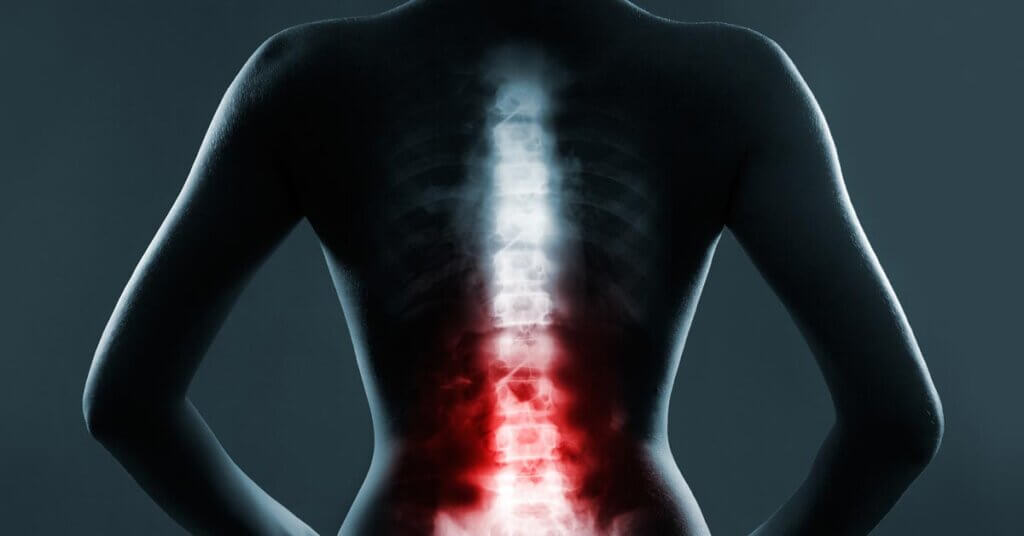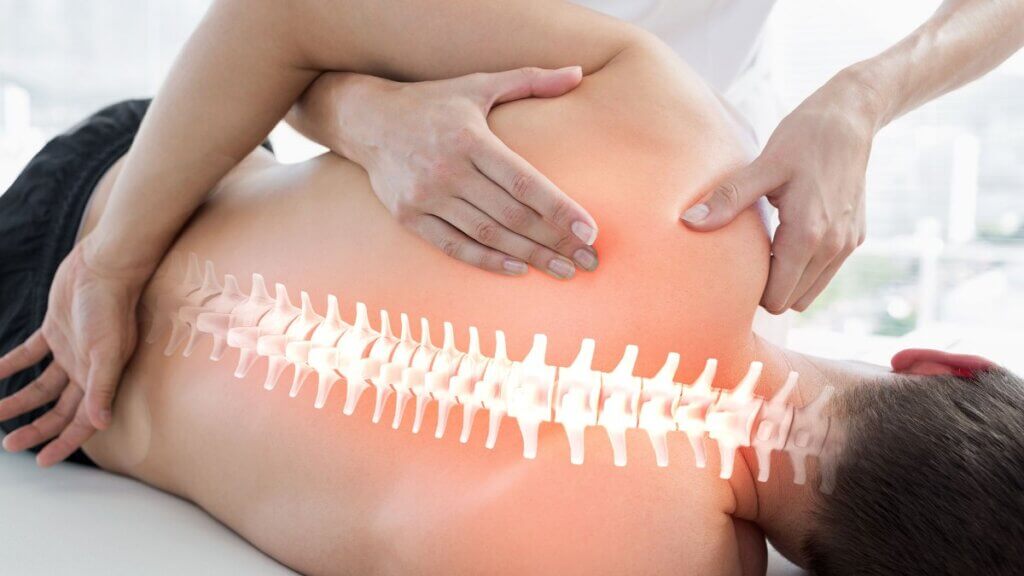What is behind the popular expression “I have a displaced vertebra”?
The reason why pain along the spine is often misunderstood is that it can originate in a wide variety of tissues and its manifestation can vary greatly depending on the level of the affected spine.

Spinal pain: which pathologies?
The spine must be placed horizontally to understand its historical function. Like a wardrobe, the spinal column served to distribute the weight of the body’s entrails throughout the trunk.
Dorsalgia: difficulties with the rib cage itself. Problems with ribs that don’t move enough and can hurt; mobility problems in the shoulders → hello tendonitis in the shoulders; nerve roots for the stomach and many organs exit through these vertebral levels, so potentially also digestion problems, etc.
Cervicalgia: stiffness of the cervical spine is felt over the years due to overuse (cervical osteoarthritis, neck pain, overuse of the neck muscles that pull the head → headaches, etc.).
Low back pain: the lumbar spine can become decompensated over time, the discs can then become deformed, bulge or even herniate, and arthritis is in full swing. These lumbar vertebrae have to be in the haystack and in the mill, to have maximum mobility, as well as supporting all the weight of the body at pelvic level. You don’t need to be an engineer or an osteopath to understand that a compromise between mobility and strength is necessary.
Spinal pain and osteopathy
Whatever the level of the spine that hurts, we can distinguish between “specific” and “common” pain. Any specific pain must be ruled out for osteopathic treatment. These pains appear in inflammatory, infectious, traumatic or tumoural contexts. For example, a vertebral fracture, cancer, spondylodiscitis, etc. These specific pains are due to damaged tissues, which are not initially treated by osteopathy.

Among the common low back pains, we can observe a facet syndrome (often precise joint pain, a precise point near the middle axis of the spine, which can hurt like a needle) or a myalgic cord (pain when I press on the paravertebral muscles, for example). Furthermore, depending on the etiology, a disc protrusion or osteoarthritis could also be relieved by osteopathy.


